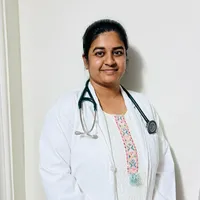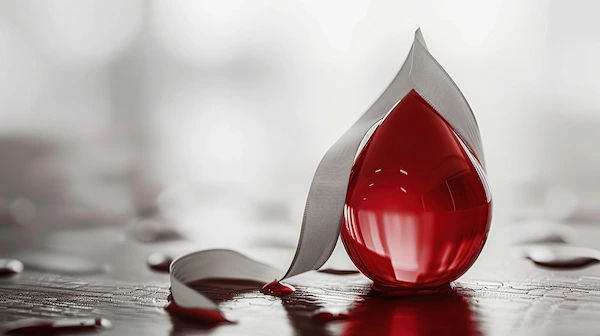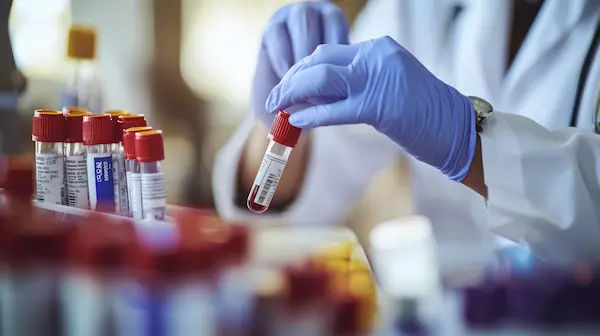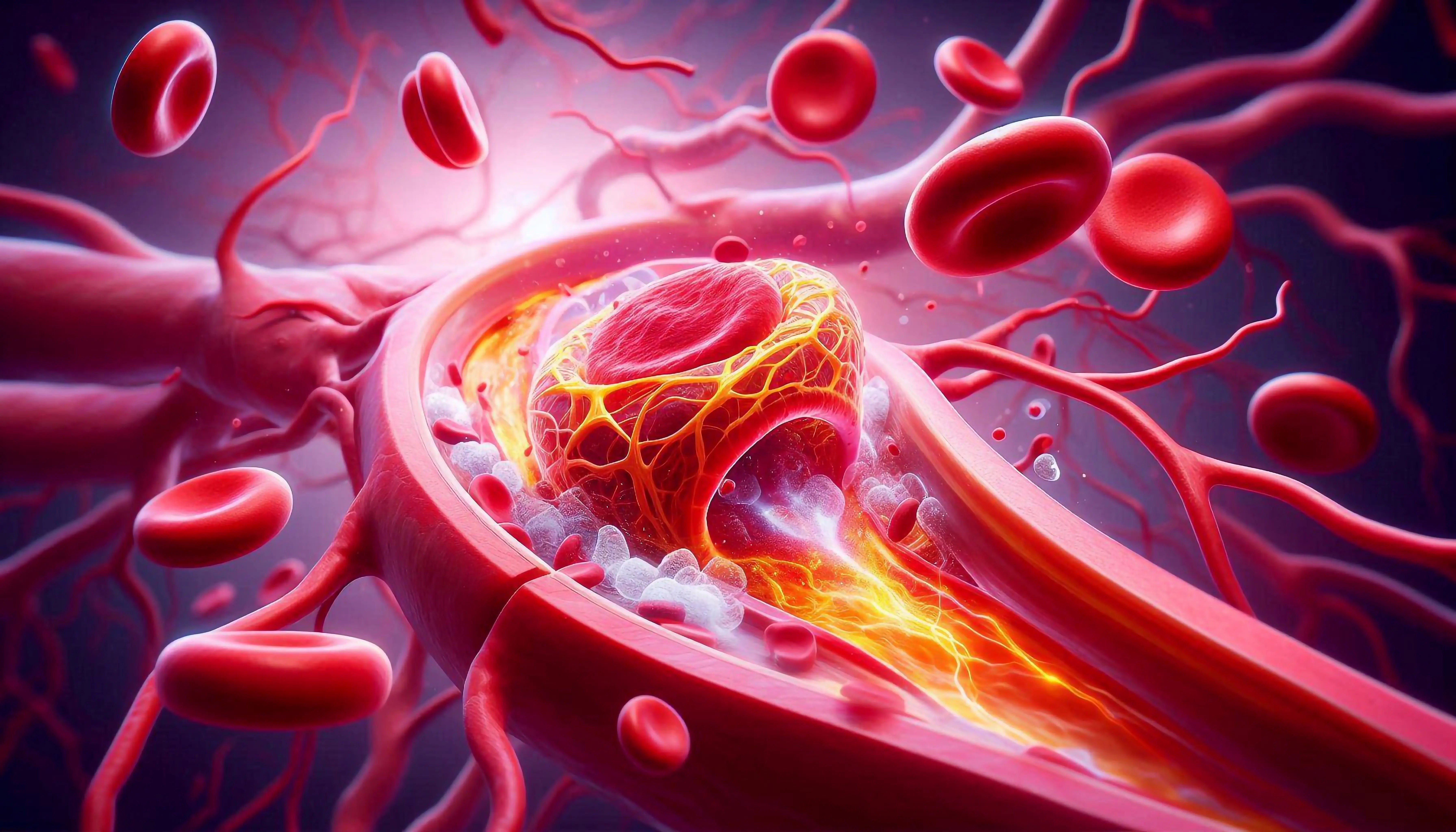Blood Cancer: What Leads to Symptoms and Types
Learn about the causes, symptoms and diagnosis of blood cancers such as leukaemia, lymphoma and multiple myeloma. Understand how these cancers affect blood cells, what tests confirm them, and when to seek medical care.

Written by Dr. Dhankecha Mayank Dineshbhai
Reviewed by Dr. Rohinipriyanka Pondugula MBBS
Last updated on 29th Oct, 2025

Introduction
Feeling unusually tired, noticing frequent infections, or finding unexplained bruises can be worrying—especially when a search points to blood cancer disorders, or both. Blood cancers—leukaemia, lymphoma, and multiple myeloma—start in the cells that make and regulate our blood and immune system. What many people don’t realise is that the very same changes that drive these diseases explain most of the symptoms: fewer healthy blood cells, overcrowded bone marrow, and an immune system that’s switched on or knocked off balance.
In this guide, we translate complex biology into plain language so you can understand what leads to symptoms, which patterns suggest different types of blood cancer, and what tests doctors use to find answers. You’ll learn red flags versus common look-alikes, practical steps you can take now, and how treatments not only target the cancer but also relieve symptoms. We’ll also share visual concepts to make sense of how blood cancer, and the immune system interact. If symptoms persist beyond two weeks, consult a doctor online with Apollo 24|7 for further evaluation. Early evaluation often means simpler treatment and better outcomes.
Blood cancers at a glance
Blood cancers (also called haematologic malignancies) arise in the bone marrow, lymphatic system, or plasma cells. Unlike solid tumours that form masses in organs, these diseases affect the blood-making factories and immune network, so symptoms can appear throughout the body. Here’s a quick snapshot of the main groups:
The three main groups: leukaemia, lymphoma, myeloma
- Leukaemia: Cancers of white blood cells (WBCs) in the bone marrow and blood. They can be acute (AML, ALL) with rapid onset, or chronic (CML, CLL) with a slower course. Acute leukaemias often present with sudden fatigue, infections, and bleeding due to abrupt loss of normal blood cell production. Chronic forms may be found on routine blood tests before symptoms arise.
- Lymphoma: Cancers of lymphocytes (B-cells or T-cells) in lymph nodes and lymphatic tissues. Hodgkin lymphoma often presents with painless swollen nodes, fevers, night sweats, and weight loss. Non-Hodgkin lymphomas vary widely; some are aggressive with rapid symptoms, others are indolent and monitored until treatment is needed.
- Multiple myeloma: A cancer of plasma cells (antibody-producing B-cells) in bone marrow. Hallmark problems are bone pain, anaemia, kidney issues, and high calcium. The CRAB features—Calcium elevated, Renal dysfunction, Anaemia, Bone lesions—are classic.
Consult Top Specialists Here
Less common: MDS and MPNs
- Myelodysplastic syndromes (MDS): “Pre-leukaemia” conditions where the marrow makes poorly formed blood cells, causing low counts and fatigue. Some progress to AML.
- Myeloproliferative neoplasms (MPNs): The marrow makes too many blood cells (e.g., polycythaemia vera, essential thrombocythaemia, myelofibrosis), leading to clotting risks or spleen enlargement.
- How “haematologic malignancy” differs from solid tumours
Because cancerous cells circulate, symptoms can be widespread—fevers, infections, bruising, bone pain—without a single lump. Diagnosis leans heavily on blood tests and bone marrow studies rather than only imaging.
What leads to symptoms? The biology behind signs you feel
Blood cancers cause symptoms through a few core mechanisms. Understanding these helps you connect the dots between “why I feel this way” and what doctors test.
Crowded bone marrow: anaemia, infections, bleeding
When malignant cells outnumber normal marrow cells, fewer healthy red cells, white cells, and platelets are made:
- Anaemia (low red cells): fatigue, shortness of breath, paleness, rapid heartbeat.
- Neutropenia (low infection-fighting WBCs): frequent or severe infections, slow healing, mouth ulcers.
- Thrombocytopenia (low platelets): easy bruising, nosebleeds, gum bleeding, pinpoint red spots (petechiae).
- Organ infiltration: lymph nodes, spleen, liver, bones, skin
Cancer cells can accumulate in:
- Lymph nodes: painless swelling in neck, armpits, or groin (typical of lymphoma).
- Spleen/liver: abdominal fullness, early satiety, pain under left rib (enlarged spleen).
- Bone: pain, especially in myeloma due to marrow expansion and bone resorption.
- Skin: rashes, itchy patches, or specific lesions in cutaneous T-cell lymphomas.
Immune system misfires: fevers, night sweats, itching
Some blood cancers cause systemic “B symptoms”—fever, drenching night sweats, and unintentional weight loss—via inflammatory cytokines. Hodgkin lymphoma often brings intense itch without a rash. Autoimmune complications can appear, such as autoimmune haemolytic anaemia in CLL.
Early versus advanced warning signs
Early signs are often subtle while advanced disease brings clearer red flags. Here’s how to distinguish them:
Non-specific symptoms that get missed
Early signs can be subtle:
- Tiredness out of proportion to activity
- Recurrent colds or sinus infections
- Heavier periods than usual, easy bruising after minor bumps
- Painless, slowly enlarging lymph nodes
- Back or rib pain that feels “deep” and persistent (myeloma)
Red flags that need prompt evaluation
See a clinician promptly if you notice:
- Fevers over 38°C (100.4°F) for more than a few days without a clear cause
- Night sweats that soak clothes or sheets
- Unexplained weight loss (e.g., more than 5% over six months)
- Unusual bleeding or extensive bruising
- Recurrent infections or a single severe infection
- Lymph nodes that keep enlarging over 2–4 weeks
- Persistent bone pain, especially with weakness or fractures (myeloma)
If any of these persist beyond two weeks, consult a doctor online with Apollo 24|7 for further evaluation. Early blood tests like a complete blood count (CBC) can quickly point the way.
When to seek care and what to do first
Different symptom timelines call for different urgency levels. Here’s how to prioritise action:
Practical timelines and thresholds
- Immediate care: High fever with chills; uncontrolled bleeding; severe shortness of breath; confusion; chest pain. Go to emergency services.
- Within days: New swollen lymph nodes that grow; drenching night sweats; widespread bruising; persistent bone pain; repeated infections.
- Within 1–2 weeks: Ongoing fatigue, appetite loss, mild fevers, or skin itching without a rash; schedule a primary care visit and request a CBC.
Telehealth and home testing options
- Start with teleconsultation if access is limited. Share a symptom diary and photos (e.g., bruises).
- Lab screening: CBC with differential, peripheral smear, LDH, uric acid. Apollo 24|7 offers home collection for CBC and related tests, which can speed triage and reduce exposure risks.
If your condition does not improve after trying basic measures or if tests look abnormal, book a physical visit to a doctor with Apollo 24|7 for in-person examination and further testing.
How doctors find answers: tests and diagnosis
Doctors use a combination of blood, marrow and imaging studies to reach a diagnosis. Here’s what they commonly order and why:
CBC, blood smear, LDH, uric acid
- CBC with differential: Looks for anaemia, abnormal WBC counts, and low platelets—the classic fingerprint of marrow problems. Abnormal blasts in blood can suggest acute leukaemia.
- Peripheral smear: A pathologist reviews cell shape and maturity; key for spotting blasts or atypical lymphocytes.
- LDH and uric acid: Elevated levels can reflect high cell turnover seen in aggressive lymphomas/leukaemias.
- Serum protein electrophoresis and free light chains: Detect monoclonal proteins in multiple myeloma.
Flow cytometry, cytogenetics, bone marrow biopsy
- Flow cytometry: Identifies the specific type of abnormal cells by surface markers (e.g., CD markers), crucial for leukaemia/lymphoma classification.
- Cytogenetics and molecular tests: Detect chromosome changes (e.g., Philadelphia chromosome in CML) and gene mutations guiding targeted therapy.
- Bone marrow aspiration/biopsy: Gold standard to confirm diagnosis, measure disease extent, and plan treatment.
Imaging for lymphomas (CT/PET-CT)
- CT scans map node groups; PET-CT identifies metabolically active disease for staging and response monitoring in many lymphomas.
- If your doctor orders tests, ask about home collection for preliminary labs and plan for the timing of procedures. Apollo 24|7 can organise home blood collection and coordinate next steps.
Risk factors and causes: what we know (and don’t)
Risk depends on a mix of genetics, environment, age and prior treatments. Here’s the main risk-factor landscape:
Age, genetics, environment, infections
- Age: Risk rises with age for many leukaemias and lymphomas; multiple myeloma is more common in older adults.
- Genetics: Certain inherited syndromes (e.g., Down syndrome for ALL) and family history slightly increase risk.
- Infections: EBV (Hodgkin lymphoma, some NHL subtypes), HTLV-1 (adult T-cell leukaemia/lymphoma), H. pylori (gastric MALT lymphoma), hepatitis C (some lymphomas).
- Immune suppression: HIV/AIDS, post-transplant immunosuppression increase lymphoma risk.
Prior chemo/radiation and occupational exposures
- Prior treatment: Alkylating agents, topoisomerase inhibitors, and radiation can raise the chance of therapy-related leukaemias years later.
- Chemicals: Long-term benzene exposure is linked to AML/MDS. Certain agricultural pesticides are being studied.
Many people with blood cancer have no identifiable risk factor; lifestyle factors play a smaller role than in many solid cancers.
“What blood cancer could it be?” Symptom patterns explained
Certain symptom clusters point toward specific types. Here’s the pattern-based approach clinicians use:
Clues that suggest leukaemia versus lymphoma versus myeloma
- Leukaemia: Rapid-onset fatigue, infections, bruising/bleeding; sometimes bone pain; occasionally gum swelling (AML) or fullness from spleen enlargement (CML). CBC often abnormal with blasts or very high/low WBC.
- Lymphoma: Painless lymph node swelling; B symptoms (fever, night sweats, weight loss); itch; chest pressure/cough if mediastinal nodes enlarge (especially Hodgkin lymphoma). Blood counts can be normal early.
- Myeloma: Deep, persistent back/rib pain; anaemia-related fatigue; recurrent infections; high calcium causing thirst/constipation; kidney impairment. SPEP detects M-protein; skeletal imaging shows lytic lesions.
Special patterns: Hodgkin lymphoma, CLL, AML, ALL, multiple myeloma
- Hodgkin lymphoma: Young adults with mediastinal masses, B symptoms, and itch; high cure rates.
- Chronic lymphocytic leukaemia (CLL): Often incidental high lymphocytes on CBC; later, infections or enlarged nodes/spleen; autoimmune complications possible.
- Acute myeloid leukaemia (AML)/Acute lymphoblastic leukaemia (ALL): Weeks of escalating fatigue, infections, bleeding; urgent diagnosis and treatment required.
- Multiple myeloma: CRAB features; older adults; watch for sudden fractures or spinal cord compression signs (urgent).
Conditions that mimic blood cancer symptoms
Many common disorders can cause similar symptoms, so testing is essential. Here’s what often mimics blood cancers and how doctors distinguish them:
Iron deficiency, thyroid disease, infections, autoimmune
- Iron deficiency or B12/folate deficiency: Fatigue, pallor, hair loss; check iron studies and B12/folate.
- Thyroid disorders: Hypothyroidism causes fatigue/weight gain; hyperthyroidism causes sweating/weight loss.
- Chronic infections: TB, mononucleosis, HIV can cause fevers, weight loss, and enlarged nodes.
- Autoimmune diseases: Lupus or rheumatoid arthritis can raise inflammatory markers and cause anaemia.
How doctors tell the difference
- Lab patterns: Microcytic anaemia suggests iron deficiency; lymphocyte morphology and flow cytometry differentiate reactive versus malignant cells.
- Time course: Infections often resolve; malignancies persist or progress.
- Biopsy: The definitive word when doubt remains.
Living with symptoms: day-to-day relief and safety
Fatigue, infection risk, and bruising are major concerns for people with blood cancers. Here’s practical, day-to-day advice:
Fatigue, infection prevention, bruising/bleeding care
- Fatigue: Prioritise rest, short activity bursts, and nutrition with iron- and protein-rich foods; screen and treat anaemia. Consider work accommodations.
- Infection prevention: Hand hygiene, masks in crowded places during neutropenia, stay current on vaccines (ask about influenza, COVID-19, pneumococcal); safe food handling.
- Bleeding: Use a soft toothbrush; avoid aspirin/NSAIDs unless advised; protect from falls; report nosebleeds or gum bleeding.
Bone pain, itching, night sweats, weight loss
- Bone pain: Heat/ice as appropriate, supportive braces, gentle physical therapy; report sudden severe pain.
- Itching: Lukewarm showers; fragrance-free emollients; antihistamines if approved; photosensitivity precautions if on certain treatments.
- Night sweats/weight loss: Keep a symptom diary; small, frequent, high-calorie meals; hydration and electrolyte balance.
- Here’s how to bundle symptom care for better days:
Treatments that also ease symptoms
Cancer treatments often relieve symptoms as the disease is brought under control. Here’s how treatments both target disease and improve comfort:
Chemotherapy, targeted therapy, immunotherapy
- Chemotherapy: Can restore marrow function by reducing malignant cells, reversing anaemia, infections, and bleeding over time.
- Targeted therapy: Examples include tyrosine kinase inhibitors for CML, BTK inhibitors for CLL, and anti-CD20 antibodies for B-cell lymphomas—often with fewer systemic side effects.
- Immunotherapy: CAR T-cell therapy, checkpoint inhibitors (in some Hodgkin lymphoma), and bispecific antibodies can produce deep remissions in selected patients.
Supportive care: transfusions, growth factors, bisphosphonates
- Transfusions: Red cells for symptomatic anaemia; platelets for bleeding risk.
- Growth factors: G-CSF to boost neutrophils; erythropoiesis-stimulating agents in certain anaemias.
- Myeloma bone health: Bisphosphonates or denosumab reduce fractures and bone pain; radiation can palliate focal bone lesions.
Discuss side effects and symptom relief goals with your care team. If starting therapy, Apollo 24|7 can coordinate pre-treatment labs via home collection and help organise specialist consults.
Here’s the practical separation between disease control and symptom control:
Outlook and progress: survival, remission, monitoring
Modern therapies have greatly improved outcomes across blood cancer types. Here’s what determines recovery and follow-up:
Why outcomes vary by type and subtype
- Many blood cancers are highly treatable or even curable, especially Hodgkin lymphoma and some leukaemias and lymphomas.
- Prognosis depends on subtype, genetics (e.g., favourable vs unfavourable cytogenetics in AML), age, and response to first therapy.
- Newer therapies continue to improve survival across subtypes.
After treatment: survivorship and relapse signs
- Regular follow-ups: Blood counts, imaging (for lymphoma), and symptom review.
- Relapse clues: Recurrence of B symptoms, new nodes, falling counts, or a rising M-protein in myeloma; prompt re-evaluation leads to earlier, often easier interventions.
- Here’s what to watch for during survivorship:
Myths versus facts about blood cancer diseases
Here’s the truth behind common misconceptions:
- Myth: “If I have blood cancer, I’ll always feel very sick right away.”
Fact: Many cases are found on routine labs before severe symptoms. - Myth: “If nodes aren’t painful, it’s not serious.”
Fact: Malignant nodes are often painless; growth over weeks matters. - Myth: “A normal CBC rules out all blood cancers.”
Fact: Early lymphoma can have normal blood counts; imaging/biopsy may be needed. - Myth: “Itching means a skin condition.”
Fact: Systemic itch can be part of lymphoma or polycythaemia vera.
Consult Top Specialists Here
Conclusion
Blood cancers affect the very system that carries oxygen, fights infections, and prevents bleeding—so it makes sense that fatigue, infections, and bruising often lead the story. When cancerous cells crowd out normal blood production or infiltrate organs like lymph nodes and bone, symptoms can escalate. The most important thing you can do is notice patterns and pace: Are symptoms clustering together? Are they getting worse over weeks? A CBC and a focused exam can quickly separate common problems from conditions that need specialist attention.
This guide connected the dots between biology and the symptoms you feel, clarified which patterns point toward leukaemia, lymphoma, or myeloma, and outlined the tests doctors use to confirm a diagnosis. We also covered practical steps for living with symptoms and explained how modern treatments not only target cancer but also relieve day-to-day problems. If your symptoms persist or you’re worried by red flags such as drenching night sweats, enlarging nodes, or unusual bleeding, consult a doctor online with Apollo 24|7 for guidance. If lab tests are needed, Apollo 24|7 offers convenient home collection for CBC and related panels. Early answers reduce uncertainty and open doors to more—and often better—treatment options. You don’t have to navigate this alone; timely care and clear information can make all the difference.
Here’s a final prompt for next steps and contact options:
Consult Top Specialists Here

Dr. Priyanka Chauhan
Haemato Oncologist
7 Years • MBBS, MD, PDCC (Hemato-oncology), Post-Doctoral Fellow in Bone Marrow Transplant
Lucknow
Apollomedics Super Speciality Hospital, Lucknow
(50+ Patients)
Dr. Steve Thomas A
Haemato Oncologist
8 Years • MBBS, MD, DM
Chennai
Apollo Speciality Hospitals Vanagaram, Chennai

Dr. Sandeep Muzumder
Radiation Specialist Oncologist
21 Years • MBBS (JIPMER, Pondicherry), MD (AIIMS, New Delhi)
Bhubaneswar
Apollo Hospitals Old Sainik School Road, Bhubaneswar

Dr. Rupam Manna
Radiation Specialist Oncologist
4 Years • MBBS MD(RADIO THERAPY)
Barasat
Diab-Eat-Ease, Barasat

Dr.sanchayan Mandal
Medical Oncologist
17 Years • MBBS, DrNB( MEDICAL ONCOLOGY), DNB (RADIOTHERAPY),ECMO. PDCR. ASCO
Kolkata
Dr. Sanchayan Mandal Oncology Clinic, Kolkata
Consult Top Specialists Here

Dr. Priyanka Chauhan
Haemato Oncologist
7 Years • MBBS, MD, PDCC (Hemato-oncology), Post-Doctoral Fellow in Bone Marrow Transplant
Lucknow
Apollomedics Super Speciality Hospital, Lucknow
(50+ Patients)
Dr. Steve Thomas A
Haemato Oncologist
8 Years • MBBS, MD, DM
Chennai
Apollo Speciality Hospitals Vanagaram, Chennai

Dr. Sandeep Muzumder
Radiation Specialist Oncologist
21 Years • MBBS (JIPMER, Pondicherry), MD (AIIMS, New Delhi)
Bhubaneswar
Apollo Hospitals Old Sainik School Road, Bhubaneswar

Dr. Rupam Manna
Radiation Specialist Oncologist
4 Years • MBBS MD(RADIO THERAPY)
Barasat
Diab-Eat-Ease, Barasat

Dr.sanchayan Mandal
Medical Oncologist
17 Years • MBBS, DrNB( MEDICAL ONCOLOGY), DNB (RADIOTHERAPY),ECMO. PDCR. ASCO
Kolkata
Dr. Sanchayan Mandal Oncology Clinic, Kolkata
More articles from Blood Cancer
Frequently Asked Questions
What are the earliest signs of blood cancer I should watch for?
Early signs include fatigue that doesn’t improve with rest, recurrent infections, easy bruising, and painless swollen lymph nodes. Persistent night sweats or unexplained weight loss are also warning signs. If symptoms persist beyond two weeks, seek a CBC test through home collection and consult a doctor online with Apollo 24|7.
Can a CBC detect all blood cancers?
A CBC is an essential first step and can reveal anaemia, abnormal white cells, or low platelets. However, some lymphomas may not affect blood counts early. Additional tests like imaging, flow cytometry, or a biopsy may be needed.
How do leukaemia symptoms differ from lymphoma symptoms?
Leukaemia often presents with rapid fatigue, infections, and bleeding due to marrow failure. Lymphoma more commonly starts with painless, enlarging lymph nodes and B symptoms like night sweats. Only testing confirms the diagnosis.
Does itching mean I have Hodgkin lymphoma?
Itching can occur in Hodgkin lymphoma but also with dry skin, allergies, or other conditions. It’s more concerning if it occurs with swollen nodes, fevers, or night sweats. Speak with a clinician if it persists.
What risk factors increase the chance of blood cancers?
Older age, certain infections (e.g., EBV), immune suppression, prior chemo/radiation, and occupational benzene exposure can increase risk. Many patients have no identifiable risk factor.



.webp)
